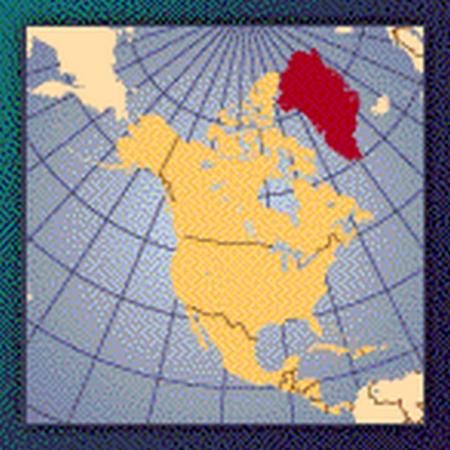Greenland: An island in the middle of the geopolitical dispute over access to rare earths
The left-wing Inuit Ataqatigiit (IA) party, with an environmentalist agenda opposed to the expansion of large mining projects in the region, received the most votes in the island’s legislative elections.
- Opinión

On April 6 this year, legislative elections were held in Greenland, an island located between the North Atlantic and the Arctic Ocean, politically linked to Denmark and with just over 56,000 inhabitants. The left-wing Inuit Ataqatigiit (IA) party, with an environmentalist agenda opposed to the expansion of large mining projects in the region, received the most votes. They beat the social democratic Siumut party, which had ruled the region almost continuously since 1979. At first glance, it might appear to be just an ordinary change in the island's electoral landscape. However, this process was closely followed by the governments of the United States, China and the European Union countries[1].
What could be the reason for such international interest in the island's elections?
A possible explanation for this interest lies in the existence of a significant unexploited reserve of rare earths in its territory. The quantity of these resources present on the island is estimated at 11.1 million metric tons, making Greenland the world's fifth largest reserve of this strategic mineral[2]. Rare earths are a group of 17 chemical elements used in the production of extremely strong permanent magnets, essential in the development of projects related to wind energy, hybrid and electric vehicles, electronic devices and rechargeable batteries. In this sense, they are fundamental in the performance of emerging technologies for clean energy and low carbon gas emission and, therefore, central in proposals for energy transition to a matrix less dependent on fossil fuels. In this context, the European Ecological Pact, the latest investments announced by Joe Biden's government, in the United States, directed to the development of low carbon emission sectors, as well as the initiatives of the Chinese Communist Party in the same direction, have trigggered a great increase in the demand for these materials.
Although the world reserves are not scarce, the extraction of these elements is a complex operation. In addition to the large amount of waste generated, about 96% of what is mined is discarded, rare earths are commonly found with radioactive materials. In view of these findings, the continuation or not of ongoing mining projects on the island was a central issue in the elections held in Greenland. The Kvanefjeld project, led by Australian mining company Greenland Minerals and Energy and supported by Chinese technology and capital from China Nonferrous Metal Industry's Foreign Engineering and Construction, was in the spotlight. This project, at its full operation, would be responsible for the disposal of 8,500 tonnes of tailings daily and would also carry out uranium exploration. Both dimensions caused great resistance from the local population, with strong economic links to fishing activity, fearful of possible damage to water resources in the region. Faced with this scenario, the representatives of the IA party ruled out the continuity of the project.
In order to expand the discussion about global interests in relation to rare earths still unexplored in Greenland's territory, it is useful to analyse the data that indicate geographically the locations of the main reserves and world production of these elements. As the graphs below show, China is the world's largest producer, accounting for 58% of the total, followed by the USA (15%), Myanmar (12%) and Australia (7%). China also holds the world's largest reserves, with a total of 36%, followed by Vietnam (18%), Brazil (17%) and Russia (10%). Australia and the United States have only 3% and 1% of world reserves, respectively, which means that maintaining the pace of production of the two countries puts great pressure on the reserves present in their territories.
Production (left) and Reserves (right) of rare earths, by country.
From the above lines, we can then understand the interest of the large industrial centres: China, the USA and the European Union, in Greenland's internal politics. Access to elements such as rare earths is fundamental for the development of technologies that are being employed in various areas in order to reduce the emission of carbon dioxide in the activities carried out by society. In view of the importance of these mineral resources for the energy transition process, we can state that the future of Kvanefjeld, despite the initial position of the IA representatives against its continuity, is still in dispute.
In the same way, countries like Brazil and Vietnam, with large reserves and little representativeness of their production at a world level, will be targets of great pressure to increase the extraction of these resources in their territories. This context calls for reflection to identify the impacts that energy transition initiatives developed in central countries of the world system, that are so dependent on strategic mineral resources, will have on peripheral territories rich in these raw materials, as is the case of Latin American countries. We suspect that from the socio-environmental point of view, the impacts in the next decades will be immense. But this is a subject for another article.
(Translation ALAI)
- Estevão Musa, master's candidate in the Postgraduate Program in Comparative History at the Federal University of Rio de Janeiro (PPGHC-UFRJ) and researcher at the Research Center for Geopolitics, Regional Integration and the World System.
Email: estevaomusa@hotmail.com
